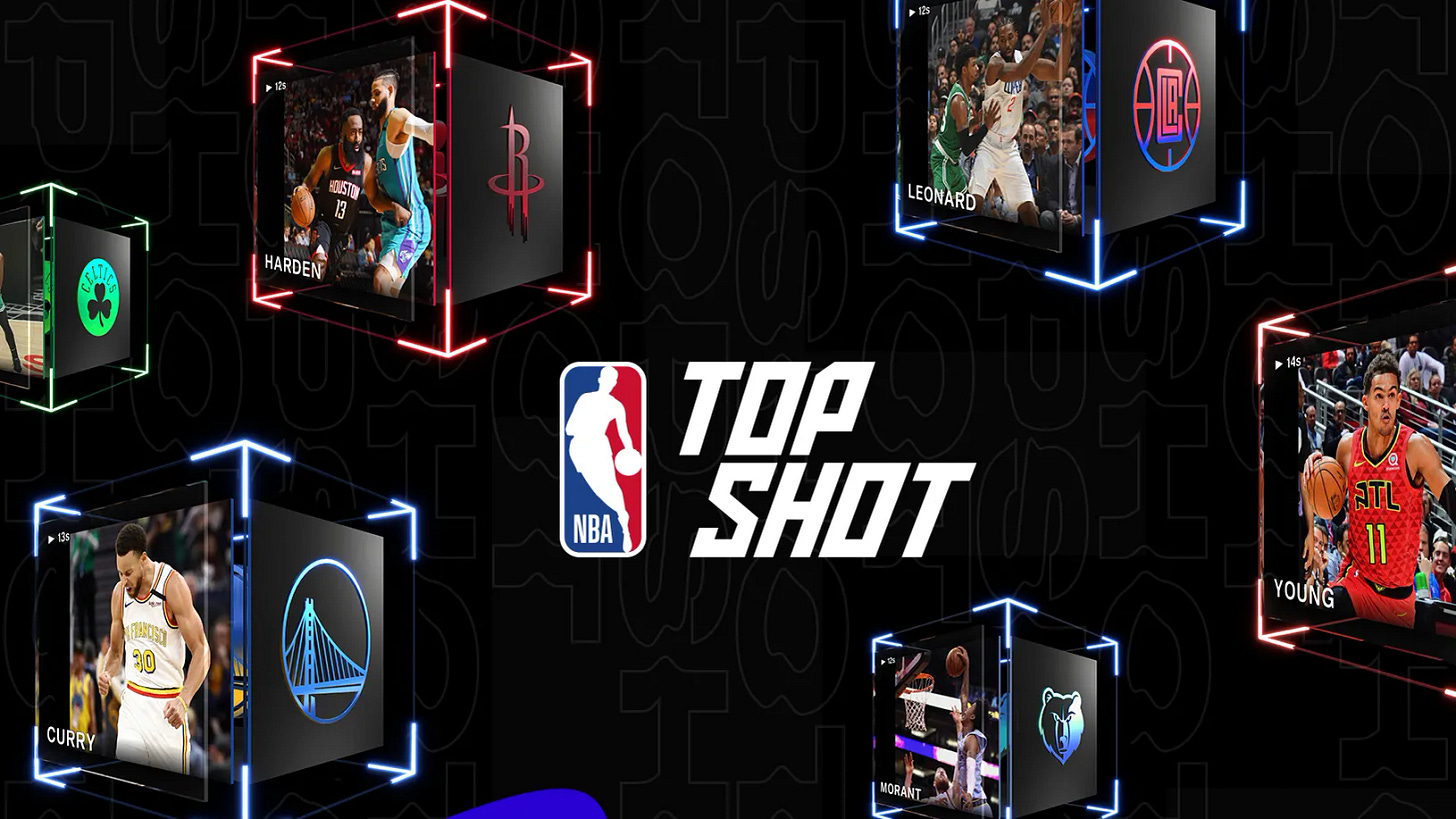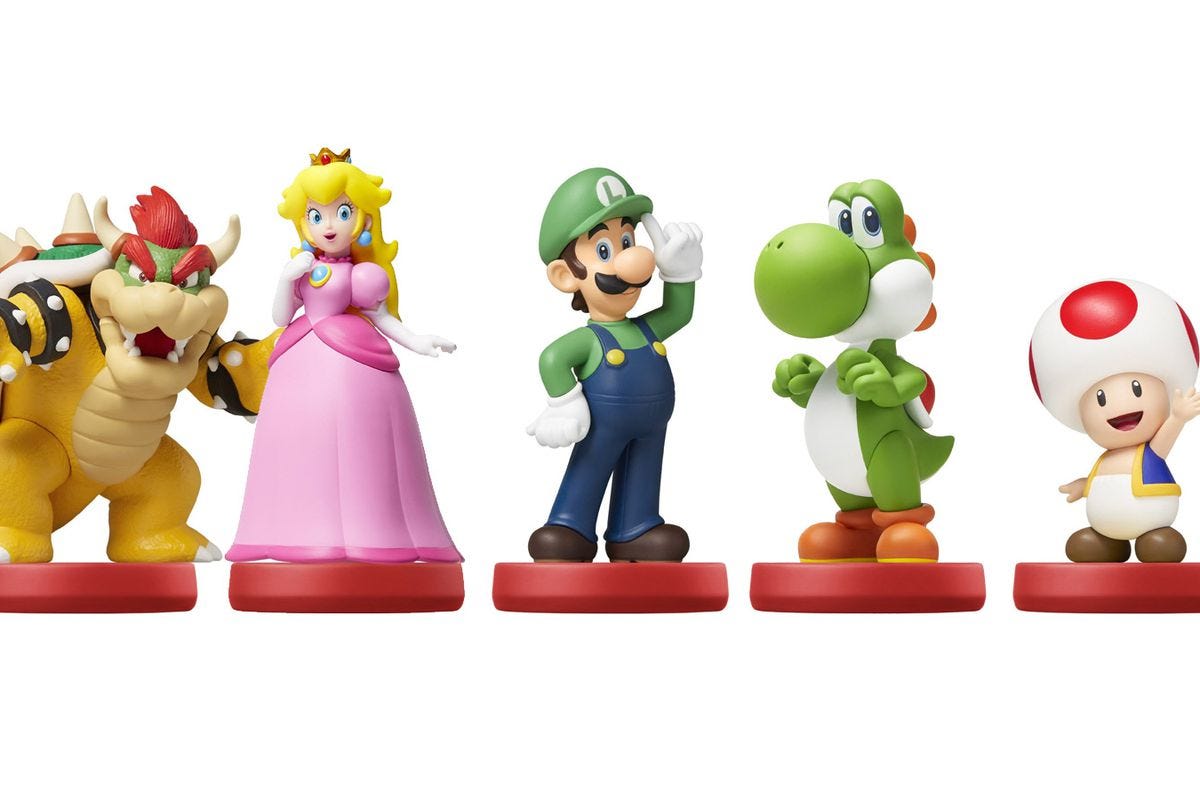Is Nintendo a Free Call Option on NFTs and Rare Digital Goods?
Nintendo’s Amiibos and Limited Releases Are a Clue
When a piece of digital art that has no copyright nor any discernible economic benefit sells for $69 million, it’s hard not to notice. My reaction was confusion at the news of this sale of digital art from the artist Beeple at a Christie’s auction.
Non-Fungible Tokens or NFTs exploded onto the scene in 2021. In the first quarter alone over $2 billion traded in NFTs. NFTs are a kind of digital asset that conveys a form of ownership that can be freely traded to other people. So, you can own digital art or official digital replays and buy and sell them like you would a physical piece of art or a sports trading card.
NBA TopShot is one example, which are like digital trading cards, but videos of slam dunks and great plays. TopShot claims over 1 million users and over $500 million in sales.
The problem is that you don’t really own a copyright or any real ownership that allows you any economic benefit or ability to restrict copies. Just because you own the official NBA TopShot of a great LeBron James dunk, doesn’t mean that there aren’t thousands of other replays available for free online.
I’ve been skeptical of NFTs because to me it involves hype and seems to involve the greater fool theory of hoping someone will pay a higher price for some digital asset. A lot of it seems to involve convincing other people that these things have value.
There has now been a predictable crash in NFTs. The volume of sales and prices have returned to January levels and a lot of the air has come out of the industry. But that hasn’t stopped a flood of companies that are planning on getting into NFTs, including toy company Mattel, and interestingly video game maker Sega.
But are speculators in NFTs on to something? Why can’t digital assets have value like physical assets? And what if digital assets become an enormous market? To me, the problem that needs solving is creating NFTs that offer some kind of value, beyond their trading value.
Enter video games. Video games have experience in selling digital items. Many video games, especially free to play video games make their money selling digital skins, clothes, items, etc from players who want to customize their characters.
And that brings us to Nintendo, a company that is often criticized by investors for not monetizing their IP or their games enough and not pursuing the latest monetization opportunity like free to play mobile games or loot boxes.
But what Nintendo is really good at is creating artificial scarcity based upon beloved video game characters and games, and scarcity is one of the main features of what NFTs and digital assets have going for them.
Consider Nintendo’s limited release sale of Super Mario 3D All-Stars video game. Nintendo created artificial scarcity by selling the game only through March 31st and then retiring the game, driving sales through the roof.
And now consider that Nintendo has been promoting a cross between a digital asset and a physical one called Amiibos. What is an Amiibo? An Amiibo is a physical toy that has a wireless chip inside that can unlock special features or characters in one of Nintendo’s games. There are limited releases from Nintendo and prices can quickly get really high. Nintendo announced their first Metroid game in years, Metroid Dread, and announced a Samus (the main protagonist) Amiibo. The new Metroid game costs $60, the new Samus Amiibo is now selling on EBay for $300, and enthusiasts are frustrated.


And that isn’t the most expensive Amiibos. One previously sold for $25,000.
And they also are selling Amiibo trading cards as well, which fits nicely with Nintendo’s origin in the late 19th century selling trading cards.
While Amiibo’s are not NFTs, they are not a far cry from one. And it is typical of Nintendo, which has been selling Amiibos since 2014 to be ahead of the curve on an innovative idea of a cross between a digital and physical item.
What amazes me is that Nintendo has the IP with an avid fanbase with strong emotional ties and is perfectly situated for the new world of digital assets and NFTs. We already know that Nintendo fans respond to scarcity, whether limited edition games or Amiibos.
Nintendo is in the midst of a massive transition to a far more profitable, stronger company thanks to digital game purchases (much higher margins), online subscriptions, IP monetization in the form of theme parks, shows and movies. While at the same time delivering cutting edge experiences in augmented reality (Mario Kart Live) and its soon to be released apps with augmented reality company, Niantic.
The company is perfectly positioned for the opportunity in digital goods and NFTs that play to the company’s strength in limited releases and creating scarcity. All of this can be had for 12 times trailing earnings excluding its monstrous cash holdings (for those of you skeptical of a Japanese company’s cash having any value, 16 times).
And I take very little risk if I’m wrong, and it is only one of a number of call options the company holds. As a value investor, I could not be more excited.
One more thing, I highly recommend you listen to the recent Invest Like the Best Podcast on video games, game design, NFTs and the future of digital goods.
P.S. Another example of Nintendo transitioning and monetizing its IP is the opening retail stores in Japan. This comes on the heels of the launch of their new theme park and movies under development.





